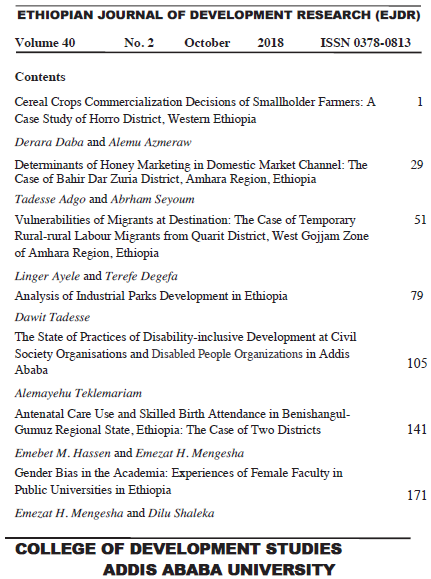Cereal Crops Commercialization Decisions of Smallholder Farmers: A Case Study of Horro District, Western Ethiopia
Keywords:
smallholder farmers, cereal crop, commercialization decision, Horro district, western EthiopiaAbstract
This study aimed at identifying and analysing factors affecting
commercialization decisions of smallholder farmers on major cereal crops in
Horro District, Oromia, Ethiopia. A multi-stage sampling approach was
employed to choose the district, kebele and sample households. A total of 144
farm households were considered in this study. Focus group discussions, key
informant interviews and field observations were held to generate qualitative
data. This was supplemented by secondary data collected from different
published and unpublished sources. Descriptive statistics and logit model
were used to identify determinants of commercialization decisions of
smallholder farmers and effects of explanatory variables on their decision.
The results of the study indicated that 16 per cent of the sampled farm
households were in commercialized category, whereas the majority (84%)
fell in non-commercialized category. Access to credit service, storage
methods, extension access, oxen resource endowment, farming equipment
endowments and total harvest were important in affecting commercialization
decisions of smallholder farmers, focusing on wheat, barley, maize and teff.
To accelerate agricultural commercialization in the area, there is need to
encourage market infrastructure, credit services, extension service, and
improved crops storage facilities

